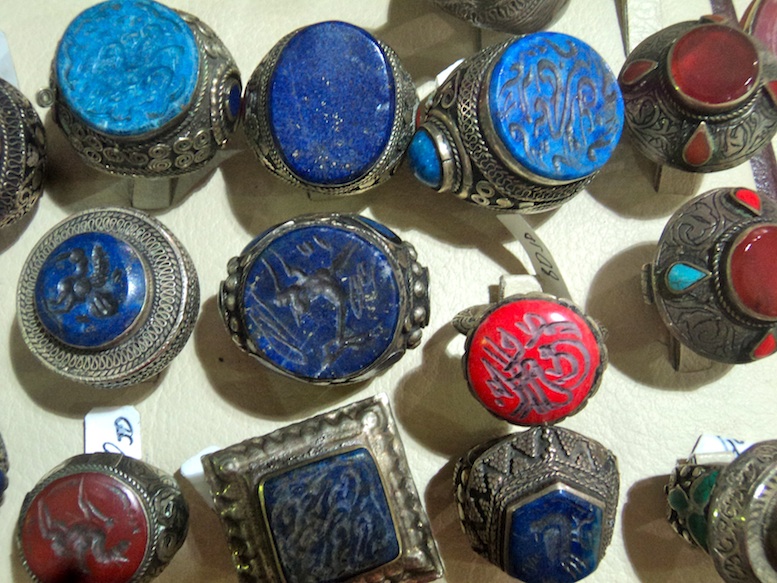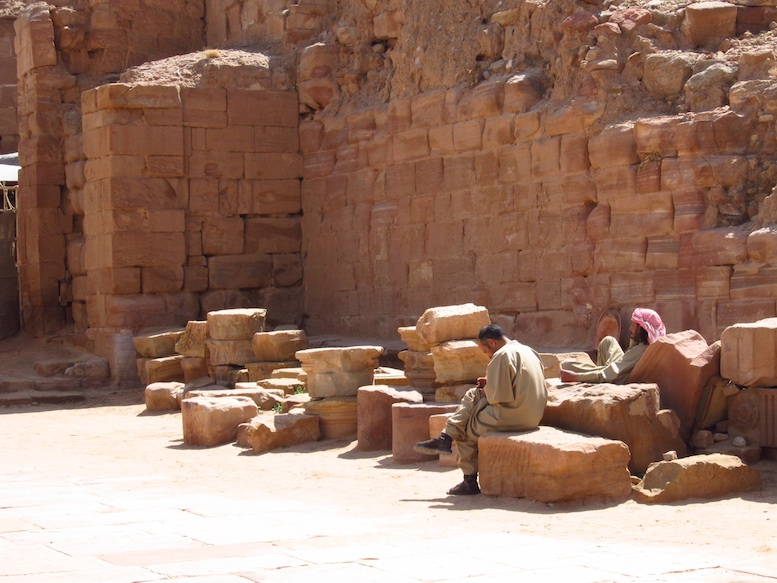|
I worry constantly about my eyes. I embrace my eyewear collection, spanning cool couture to Jessica Fletcher, but am furious at my dependency. And I get angry having to take them off to read and put them back on to see more than a foot in front of me.
I feel as if I have just recently begun to be able to see, and yet, at the same time, my eyes are failing me. I need to be able to look. I panic about future deterioration and catastrophize about going blind. That I have resolved to jump off a cliff if my eyes fail me is both pathological and childish, but speaks to the intensity of my obsession. I don’t take my eyes for granted, not for one day, not for one second. I cannot live without looking. I make sense of the world visually. I take in the most information with my eyes. I have always loved reading, for which the eyes are the key technology. I process best through reading or watching, not through listening. I can listen, but processing what I hear is laborious. I don’t attend many poetry readings anymore because I find sitting through readings insufferable. The poems are usually ruined. I am moved most by savouring the texture and shape and meaning of the words on the page, soaking in the sweet contrast of the marks against space, looking at the weight of the words as they make their way into my soul. Our visual receptors are not simply tools or techniques to absorb information- they are my most important source of sensuality and pleasure. How I delight in gorgeous women or unusual colour combinations! The aesthetic of both lean and serene minimalism and the eccentric, clunky cacophony of clutter have equal appeal. There is beauty everywhere I look, and I cannot live without beauty. I spend my whole life looking. Not at anything in particular, but at everything. For answers, yes, and sometimes for things I’ve lost. But mostly, just looking. It is obsessive, the number of images I go through. It is hunger. I look at art and photography in books, in galleries, in museums, on Pinterest and on Saatchi and on Google. The originals are best, but books can take me all over the world and the internet is up to the minute. My own library of art books would take a whole life to properly explore. But there is more out there, more. The online universe is witchcraft really, with its miraculous instantaneity. Books are magic, too, populated by the very spirits depicted in their pages. I have a stack of coffee table books on Marilyn Monroe. I never tire of looking at her beautiful face. Sometimes I make a point of not looking at her face. It is a revelation to see how fully she conveys everything with her body. Even if she had a paper bag over her head, she would be perfect. Monroe is as gifted as a dancer in what she is able to show with line and curve and movement. Sometimes I leaf through the photos and look only at her hands and feet. She conveys a fluid elegance in even the most candid shots, her hands like Buddhist mudras or the chironomical gestures of Orthodox icons. Today I looked at Egon Schiele, a book I picked up at a Taschen sale. I have always been repulsed by the putty and bruise pallor of Egon’s subjects, and by the raw edge of his disgust. But lately I have found his paintings increasingly compelling. There is an unbearable sadness in their temporality. The compulsion and revulsion Schiele had for the human body is heartbreaking in hindsight, with the merciless punctuation of death, which took him and his wife and her unborn baby, via pandemic influenza. He was 28. The ick factor is also strong with the work of Joel-Peter Witkin. He uses actual dead bodies to create the assemblages for his photographs. This extravagant flouting of taboo seems hideous and perverse, but there is a compelling beauty in how he refuses to turn away from what we pretend not to see, what we pretend not to be. The corpse has a longtime role in art, of course, as a teacher of anatomy, or as the practical matter of fact that it is. The great Caravaggio did it- he also used corpses as models. I did it, too, I went to a medical cadaver lab to view an array of grisly and dissected bodies, the insides of ourselves, death without caskets and suits and powdered pretensions. It was something I had never seen and something I had to see. Now do you see? It was horrible, this fleeting, rotting truth about ourselves. Even our eyes rot. Our fear there, our decay, for me to come to terms with and touch and see. Looking, looking. Also today: wild textured abstract paintings, and parchment, buff, eggshell, a whole rainbow of off-whites. And Monet, too. Monet, soft and fuzzy, the antithesis of Schiele, sharp edged and rough. But both men, obsessed with looking. I thought about eyes a lot on my recent voyage to Israel and Jordan. I was thankful every second of sight. The clatter of the crowded souk and the hush that fell over the night Dead Sea also held sensory magic, as did the cloud of spices rising over grilling lamb- but without my eyes, I thought quite often, what would be the point of travelling? I could climb to the top of the Masada, but for what? To listen to the dusty silence of forever below without seeing its vast reach beyond me? I could hear a few goats go by but not see them fleck the desolate landscape with life, and what would be the point of that? I took in countless things. I could not understand how some used the bus ride to snooze. That meant closing your eyes! I tried to look out of the windows on both sides and the front, too, with my cameras clicking to capture a fraction of what I saw. How the rose gold morning turned to sun-bleached grey on the stones of the Jordan desert, how the saltiest sea is just a pale pink mist right before dawn. The faces of Nigerian pilgrims were round and dark; the tealights in the churches glittered gold against the ancient icons. And lemons, sunny yellow against the bluest sky. And what else? Brass, bronze, silver, lapis lazuli, red coral, carnelian, turquoise, etched, engraved, carved. Almond trees, bananas, date palms tall and lanky against stark and endless landscape. The rough bark of ancient olive trees. Crumbling ruins, the scars of history, ageless stone worn smooth under a hundred thousand thousand footsteps. On some days of my journey, my eyes literally ached from taking it all in. There was so much to see that at some points, the overload meant it wasn’t computing anymore. This phenomenon happens to me often at art galleries. There are points where you simply can’t see what you are looking at anymore. And that’s precisely what I fear most for the future. Without images, I will be a crumpled can, a dry husk, not a poet, not an artist, not a photographer. Without what I see, I will be empty. Lorette C. Luzajic www.ideafountain.ca
0 Comments
Your comment will be posted after it is approved.
Leave a Reply. |
The Ekphrastic Review
COOKIES/PRIVACY
This site uses cookies to deliver your best navigation experience this time and next. Continuing here means you consent to cookies. Thank you. Join us on Facebook:
July 2024
|






